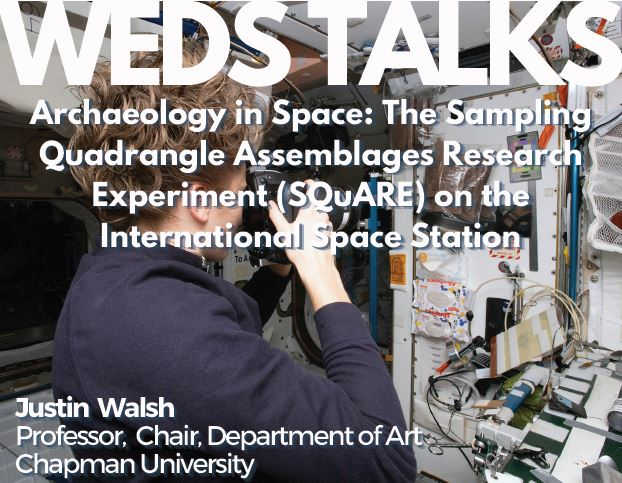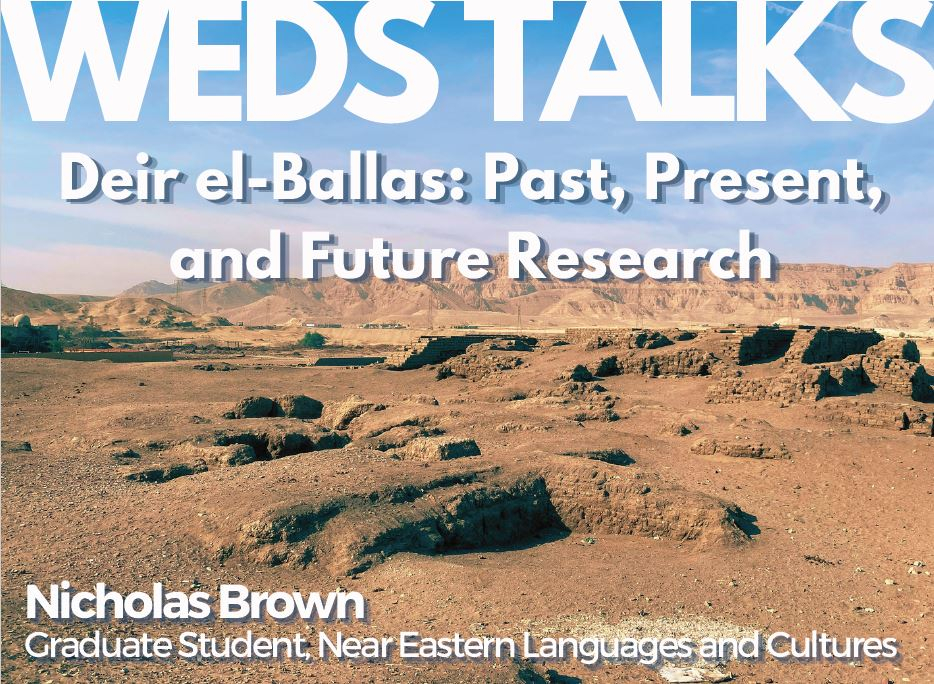Past Events
Interested in Cotsen events? Sign up for our mailing list.
ABSTRACT: Are you thinking about a field school this summer or next year? Come learn about the unique programs offered through IFR, the Institute for Field Research. UCLA students who previously completed a program will be there to share their experiences, and we'll have time to answer any questions you might have about field schools for us or your peers. IFR programs allow you to embrace your curiosity while earning academic credit and gaining practical hands-on experience for future work or studies. We will also share information about a scholarship just for LA students attending our field schools.
BIO: The Institute for Field Research (IFR) is a faculty-founded non-profit that supports field schools in the USA and abroad in a range of disciplines including archaeology, anthropology, curation, and earth/enviro studies. The IFR’s mission is to transform individuals and communities through experiential education and field research. By working with leading scholars from academic institutions around the world, the IFR delivers evidence-based field science programs in a broad range of disciplines while ensuring excellence in research and teaching.
Contact Sumiji Takahashi
Email sutakahashi@ioa.ucla.edu
Phone 310-825-4169
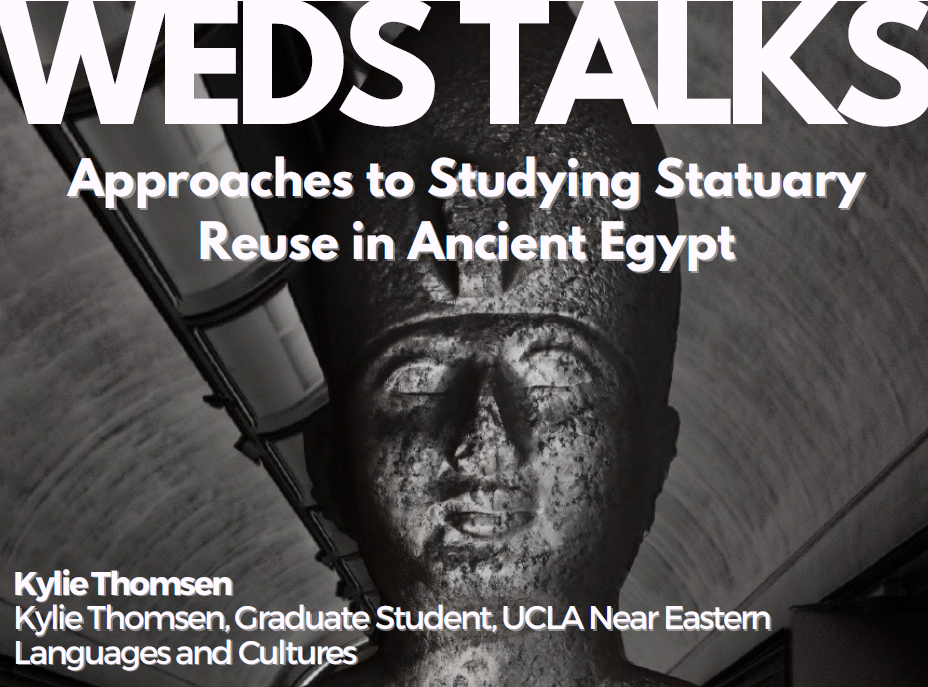
ABSTACT: Statuary reuse was an episodic practice in ancient Egypt. Reuse of a statue could range from actions not obvious in the archaeological record, such as moving a statue to a secondary location by a different owner, to the transformation of a statue by modifying its inscriptions, reworking its features, or even the destruction of a larger statue to craft several smaller ones. However, depending on the extent to which the object was modified and its overall preservation, it remains difficult to systematically study, particularly over time and space. This presentation will focus on approaches to identifying the actions associated with statuary reuse in order to better analyze the object’s life history through the modifications it underwent. Through this, I aim to contribute to the understanding of the intent(s), context(s), and reception(s) of statuary reuse in ancient Egypt, as well as the technical strategies employed by the ancient craftspeople who altered these objects for their later uses.
BIO: Kylie is an Egyptology PhD candidate in the Department of Near Eastern Languages and Cultures at the University of California, Los Angeles. She received her BA in anthropology from the University of Arizona and her MA in Egyptology from Indiana University Bloomington. She is currently a researcher and graphic designer for the UCLA Coffins Project, which investigates coffin reuse in ancient Egypt during the Third Intermediate Period. Her dissertation research focuses on the documentation and contextualization of ancient Egyptian statuary reuse, including documenting statues via high-resolution photography, photogrammetry, RTI (reflectance transformation imaging), and traditional art historical methods in order to analyze the statues for signs of recarving, reinscribing, and other indicators of object reuse.
Contact Sumiji Takahashi
Email sutakahashi@ioa.ucla.edu
Phone 310-825-4169

Abstract: During the 19th century, archaeologists in Abydos, Egypt, uncovered hundreds of small, relatively simple graves surrounding the funerary complexes of the first kings of Egypt in the 4th millennium BCE. Ever since these burials were discovered, scholars have debated whether the individuals within these subsidiary burials were sacrificed to accompany their ruler into the afterlife, or were simply buried close to their royal tomb after dying naturally. Previous scholarship has largely focused on aspects of the burials as well as the political and social context of the time period, rather than assessing the human remains within the graves. This lecture will present evidence from the human remains themselves, which complicates our understanding of First Dynasty funerary practices, as well as our interpretations of state-sanctioned violence and power in the past.
Bio: Roselyn A. Campbell is an archaeologist, bioarchaeologist, and Egyptologist. She earned her PhD at the Cotsen Institute of Archaeology, and an MA in Anthropology from the University of Montana. She is currently a Visiting Assistant Professor of Biological Anthropology at the University of California, Riverside, and the Assistant Director of the UCLA Luskin Center for History and Policy. Her research focuses primarily analyzing trauma in human remains to gain an understanding of violence as a tool of power in the past, but she also researches the history of cancers in human remains and health and Egyptian funerary archaeology
Contact Sumiji Takahashi
Email sutakahashi@ioa.ucla.edu
Phone 310-825-4169
ABSTRACT: Between January and March 2022, astronauts aboard the International Space Station (ISS) performed the first archaeological work in space, the Sampling Quadrangle Assemblages Research Experiment (SQuARE). The crew of the ISS defined six sample locations (“squares”) around the ISS and documented them through daily photography over a 60-day period. Walsh will present an overview of the SQuARE payload and results from two of the six squares.
BIO: Justin Walsh is professor of art history, archaeology, and space studies at Chapman University and Ad Astra Fellow in Space Habitats and Space Anthropology at USC. Since 2015, he has been co-PI of the International Space Station Archaeological Project (ISSAP), the first investigation of the material culture of a human habitat in space. ISSAP won awards for its work in 2023 from the Archaeological Institute of America and the American Anthropological Association. In 2024, Walsh was included in the Explorers Club 50, which recognizes “explorers changing the world and extending the meaning of exploration.”
Contact Sumiji Takahashi
Email sutakahashi@ioa.ucla.edu
Phone 310-825-4169

ABSTRACT: In Iron Age Celtic temperate Europe (450/400 BCE to late 1st c. BCE), opaque red glass was used in the decoration of gold, copper alloy, and iron prestige goods such as helmets, swords, fibulae, chariots, and horse equipment. Opaque red glass was difficult to produce and to work into a final product; craftspeople needed intimate knowledge of the ingredients necessary to create and color a gem-like and easily workable red glass, the correct firing temperature and furnace conditions for melting, and various techniques for application to a metal surface. In this talk, I will address the technical know-how to create opaque red glass and its many associated products discovered through the analysis of glass samples from the late Iron Age and early Roman provincial period settlement of Mont Beuvray in France and an ongoing experimental project to recreate opaque red glass.
BIO: Rachel Wood is a PhD candidate in the Archaeology IDP at UCLA. Her research focuses on the value and social networks created through the trade, production, and consumption of opaque red glass in late Iron Age and early Roman provincial western and central Europe.
Contact Sumiji Takahashi
Email sutakahashi@ioa.ucla.edu
Phone 310-825-4169
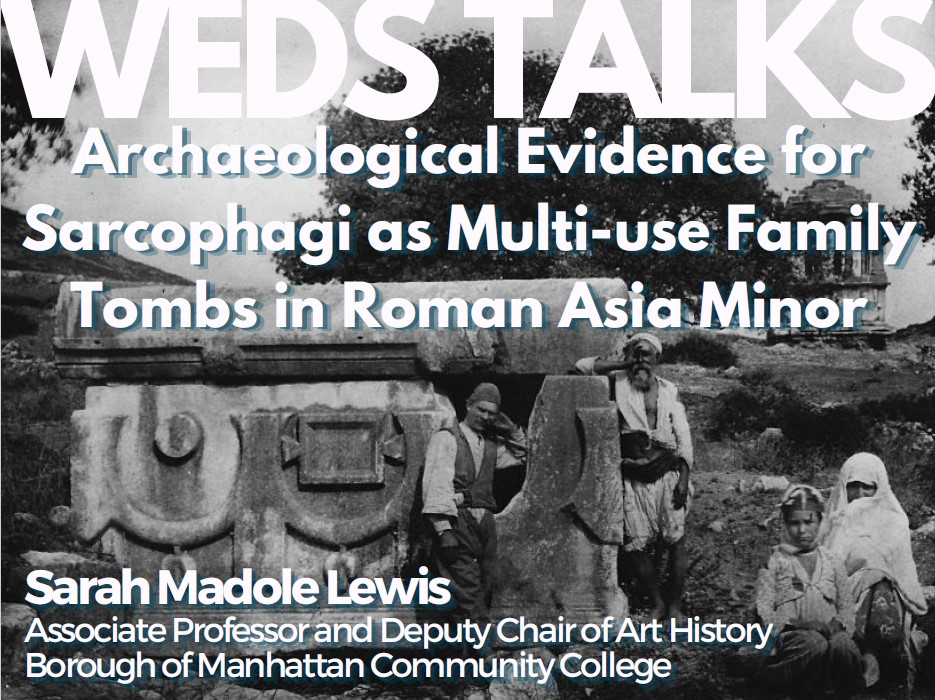
ABSTRACT: How many bodies went into sarcophagi in the eastern Mediterranean under Roman rule? Who bought monument and why? For the inhabitants of the Roman East, and in Asia Minor in particular, most patrons purchased a sarcophagus for themselves and their families, authorizing a minimum of two (and up to four) generations burial within. Yet the mortuary remains often reveal the presence of even more depositions than those specified in the texts. Using four evidentiary categories––epigraphy, skeletal remains, the structural outfitting of the sarcophagi, and iconography––I explore the phenomenon of the intended reuse of sarcophagi in Asia Minor.
BIO: Dr. Sarah Madole Lewis is Associate Professor and Deputy Chair of Art History at the Borough of Manhattan Community College (City University of New York). Her research focuses on the funerary landscapes of the ancient Roman world with a specialization on the eastern Mediterranean and the later Empire. As a current Getty Villa Research Scholar she is working on the manuscript for her book project, Roman sarcophagi in their eastern Mediterranean contexts, which examines sarcophagi from Anatolia to Cyrene during the Roman period.
Contact Sumiji Takahashi
Email sutakahashi@ioa.ucla.edu
Phone 310-825-4169
ABSTRACT: Over the past twenty years, archaeologists have come to realize that far from being a cultural backwater, the northern lowlands of the Yucatan Peninsula were integral to the development of the ancient Maya civilization. Communities constructed humongous platform mounds around the edges of the hilly Puuc Region as early as 800 BCE, at the same time that some intrepid settlers established the first farming villages within the Puuc Region itself. These earliest Puuc agricultural communities followed similar site plans that included central platform mounds and, surprisingly, full-scale ancient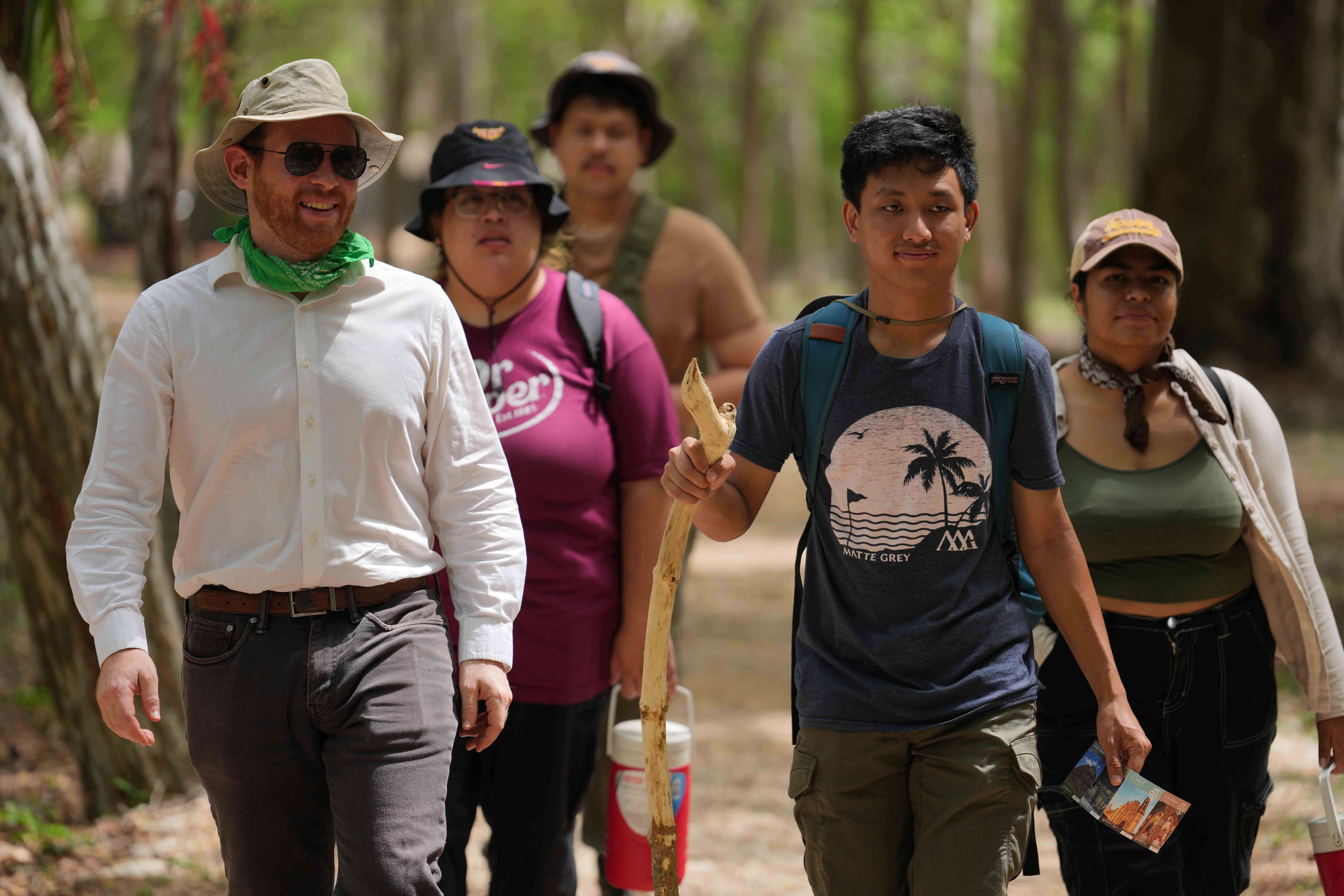
Contact Sumiji Takahashi
Email sutakahashi@ioa.ucla.edu
Phone 310-825-4169

ABSTRACT: In my talk I will discuss the connections between Archaeology, Heritage and the Future, using examples ranging from prehistoric futures to UNESCO World Heritage to contemporary long-term repositories for nuclear waste. I will also discuss the concept of ‘heritage futures’ and discuss how it matters in relation to sustainable development and address challenges posed by climate change and violent human conflicts. After this session you will understand (I hope!) what the Archaeology of the Future is all about and how you can become a Future Archaeologist yourself.
BIO: Cornelius Holtorf is a Future Archaeologist and Professor of Archaeology as well as Chairholder of the UNESCO Chair on Heritage Futures at Linnaeus University, Kalmar, Sweden. He studied in Germany and the UK, received a Doctorate from the University of Wales in 1998, and has been living in Sweden for more than two decades. He is currently a Getty Scholar working on “Heritage in Transformation”.
Contact Sumiji Takahashi
Email sutakahashi@ioa.ucla.edu
Phone 310-825-4169

ABSTRACT: In recent years, the focus of Egyptological scholarship has slowly moved away from narratives focused solely on royal monuments and texts to interrogate how kings and kingship fit into broader ancient Egyptian society. My current book project seeks to better understand where, when, why, and how non-royal Egyptians in specifically the Middle Kingdom period (ca. 2030 - 1650 BCE) engaged with kingship.
In this talk, I will go over my initial motivation for working on this topic and the ways in which my thinking has evolved, shifting from focusing on binary absence vs. presence of kingship in non-royal lives to more carefully considering the ways in which kingship was engaged with by those outside of the royal court. Rather than impose strict categorizations, my approach instead highlights the variability of engagement with kingship in the non-royal sphere, including for instance encounters hinging on the durability of architecture or the experience of occasion.
BIO: Luiza Osorio G Silva is Assistant Professor of Art History, Archaeology, and Visual Studies at the University of California, Irvine. She is currently the Assistant Director of the Mastaba of Akhmerutnisut Documentation Project (MAD-P) in Giza, Egypt. Her research interests include ancient Egyptian kingship, monumentality, and the audiences and contexts for art and architecture.
Contact Sumiji Takahashi
Email sutakahashi@ioa.ucla.edu
Phone 310-825-4169
ABSTRACT: As the capital city and administrative center of the Theban kings during the Hyksos expulsion of the 17th Dynasty (ca. 1650-1521 BC), Deir el-Ballas is of tremendous importance in the history and archeology of Egypt. The site is located on the west bank of the Nile to the north of the town of Ballas proper by the villages of El-Deir and El-Deir el-Gharbi.
The site was first excavated by the Hearst Expedition from the United States under the direction of George Reisner in 1900-1901. In order to clarify the records of that expedition and publish the site, four seasons of archaeological work were undertaken by Peter Lacovara between 1980-1986 under the
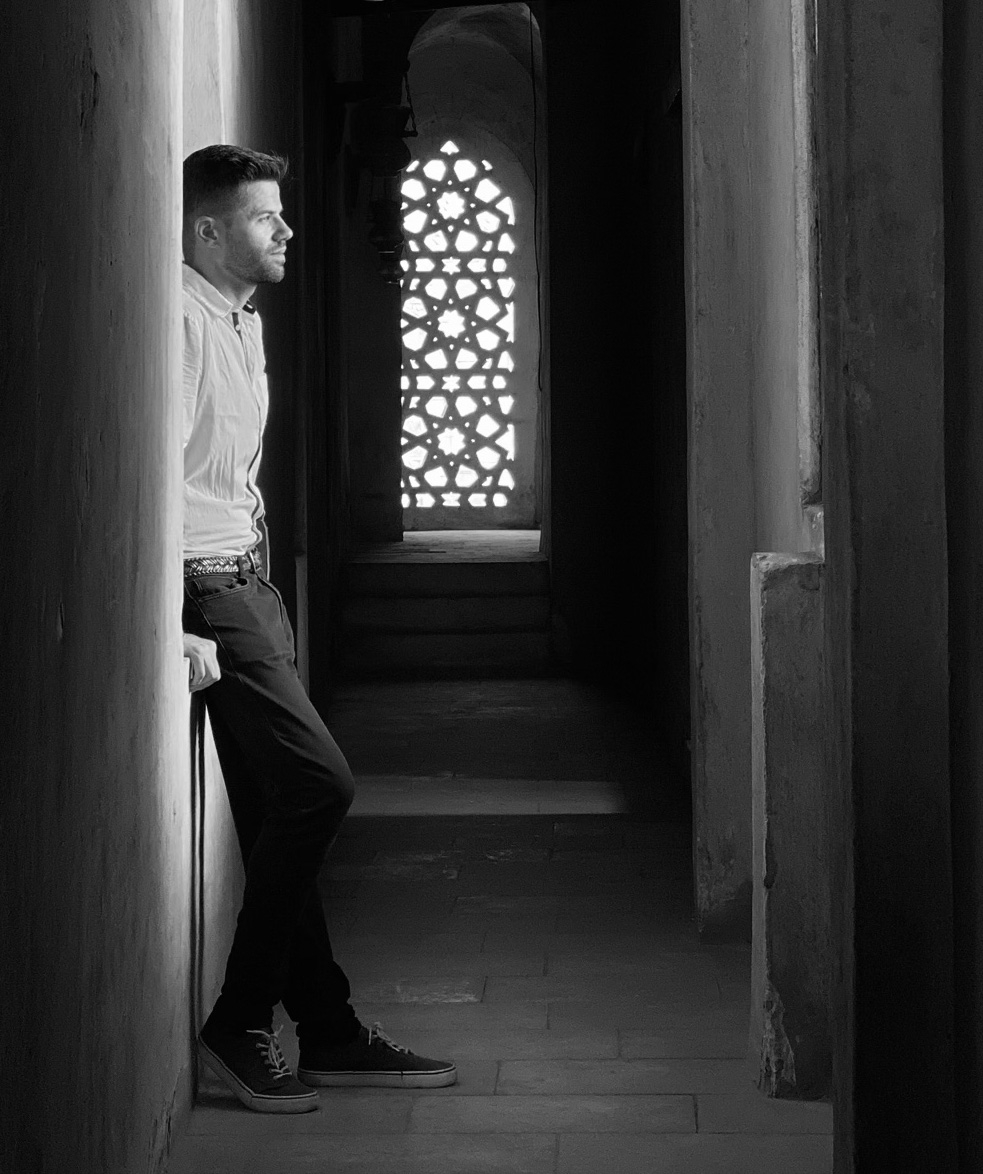 sponsorship of the American Research Center in Egypt and the Museum of Fine Arts, Boston. Since 2017 the Deir el-Ballas Expedition has been working together with the Qena Antiquities Inspectorate to restore and protect these archaeological remains and to preserve this important site for future generations. The goals of the new work of the Deir el-Ballas Expedition are twofold, to publish George Reisner’s original excavation records along with our new archaeological research at the site- to understand the previous excavations and to protect and preserve the ancient monuments.
sponsorship of the American Research Center in Egypt and the Museum of Fine Arts, Boston. Since 2017 the Deir el-Ballas Expedition has been working together with the Qena Antiquities Inspectorate to restore and protect these archaeological remains and to preserve this important site for future generations. The goals of the new work of the Deir el-Ballas Expedition are twofold, to publish George Reisner’s original excavation records along with our new archaeological research at the site- to understand the previous excavations and to protect and preserve the ancient monuments.
BIO: Nicholas (Nick) Brown is an American Egyptologist who has worked as an archaeologist in Egypt since 2011. He received his MA degree in Egyptology from the American University in Cairo in 2016, and currently is an Egyptology PhD candidate at the UCLA.
Contact Sumiji Takahashi
Email sutakahashi@ioa.ucla.edu
Phone 310-825-4169
- ‹ previous
- 3 of 21
- next ›
